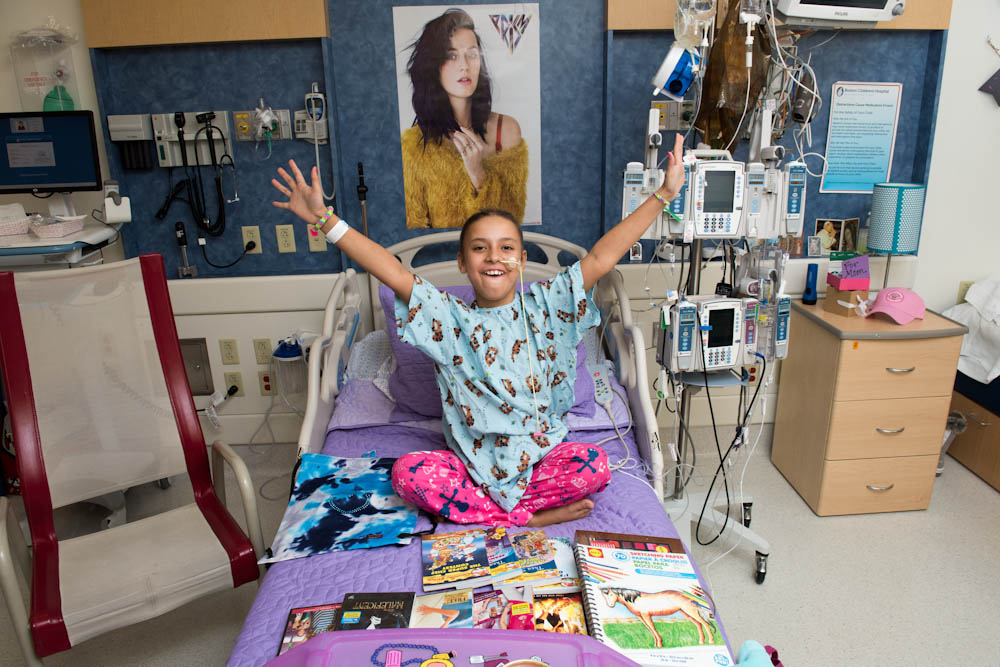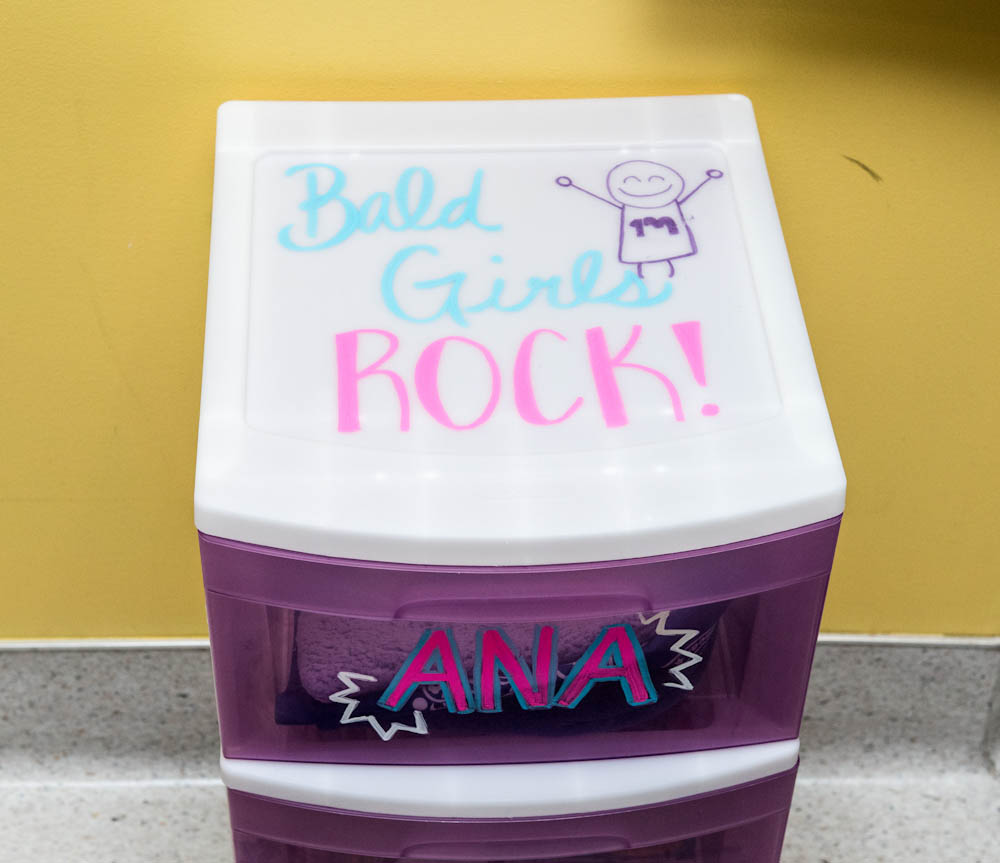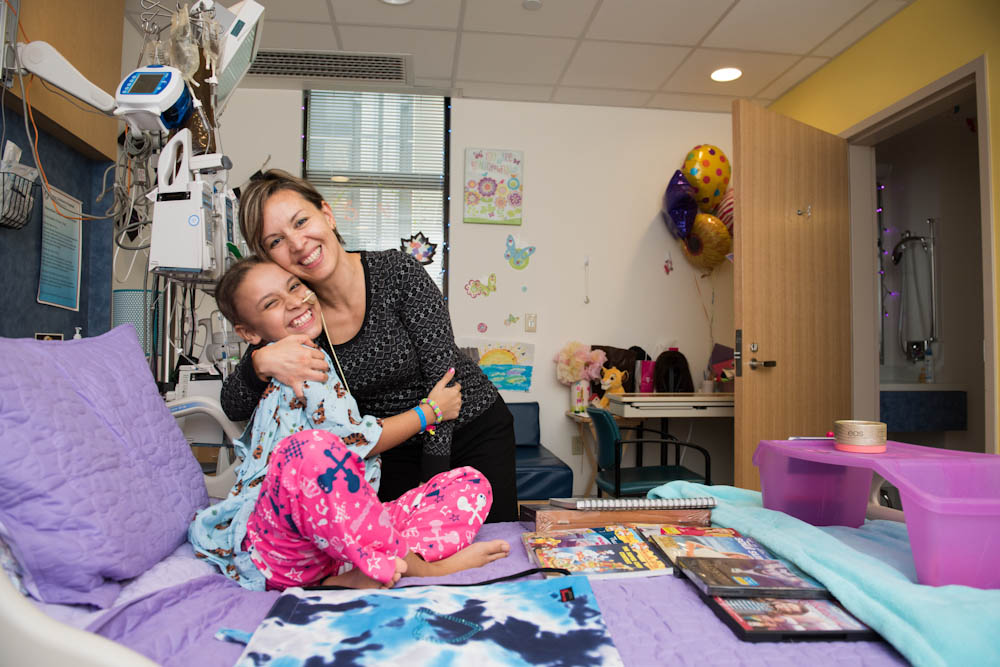Ana Karen Ventura may be a long way from home, but it sure doesn’t feel like it.

Ventura, 11, is an inpatient at Dana-Farber/Boston Children’s Cancer and Blood Disorders Center, but her hospital room at Boston Children’s Hospital looks more like the bedroom of any tween girl.
There are posters of flowers and her favorite celebrities, paper butterflies hanging from the ceiling, and blue and purple lights strung around her window, door, and mirror. A colorful bedspread matches the shade of her new lamp, and a portable dresser has the credo “Bald Girls Rock!” highlighted on its top.
She just lost her hair, but Ana Karen can’t stop smiling as she shows off her new decor. “It’s even cooler than I thought it would be,” she says, looking at the “Ana Fight” flags hanging on one wall. Even cooler, her mother Mireya says, is how much the decorations help Ana Karen feel good about herself.
The Mexico native’s room was spruced up through the “Dec My Room” program, available to each child whose stay at the hospital is slated for three weeks or more. It is especially appealing to bone marrow transplant patients like Ventura who have weakened immune systems which restrict them to their rooms much of the time.

“Having their room ‘deced’ – or decorated – gives kids more control and makes them feel more comfortable while they are staying here,” says Amanda Dean, MS, CCLS, a child life specialist in the Stem Cell Transplant Center at Dana-Farber/Boston Children’s. “It’s normalizing; it gives them a sense that they have a lot of their own stuff around them, not just the hospital’s.”
The initiative is funded by One Mission, a charitable foundation dedicated to enhancing the lives of pediatric cancer patients and their families. Each eligible child receives a sign-up sheet on which they describe their favorite hobbies, colors, and other interests; using these preferences, volunteers head to the stores and purchase items. While patients are away having a procedure or hanging out in the playroom, the volunteers come in and work their magic.
As Pediatric Cancer Survivors, Mother and Daughter Share Unique BondFive Reasons for Optimism About Pediatric Cancer Care and ResearchHow a Navy SEAL Veteran Helps Kids with Cancer
“Some patients and their parents cry when they come back and see it,” says Mary Malley, MS, CCLS, another child life specialist. “But that’s OK, because some of us are crying too.”
Decorated rooms vary dramatically based on a patient’s age and sex. A preschooler might opt for a Thomas the Tank Engine bedspread and pillows, while a teenager goes for shag carpets and lava lamps. The youngest patients, including those born with cancer, have activity mats, crib carousels, and other items normally found in a nursery. Siblings of all “dec” recipients are remembered with gift cards from One Mission.

“Stem cell transplant can offer a cure, but it is an intense process – so we do everything we can do to make this feel like a home away from home,” says Leslie Lehmann, MD, Medical Director of the Pediatric Stem Cell Transplant Unit at Dana-Farber/Boston Children’s. “Decorating their rooms helps tremendously. It also gives patients something they can control and gives staff a chance to better see who they were and what they love before they became patients.”
Raul Ventura says Dana-Farber/Boston Children’s programs including Dec My Room have helped his daughter Ana Karen “live a very special moment and experience, full of magic which represents happiness, strength, and hope.” He says the family wants to help with future initiatives.
In the meantime, although the Venturas are here for “one mission – the health of our daughter” – things like this make the challenge a little easier to handle.
“The love they show the children is incredible,” Mireya Ventura says. “We are so thankful.”
